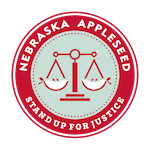In Nebraska, 14 farmers’ markets now accept payment in the form of Supplemental Nutrition Assistance Program benefits (formerly called ‘food stamps’). This increases low-income families’ access to fresh produce, locally-sourced dairy products, and even seeds and plants that produce food. This option also benefits local farmers, because the equipment needed to process SNAP Electronic Benefit Transfer (EBT) cards also allows markets to accept credit and debit transactions in addition to cash.

Lincoln’s “F” Street Market, which takes place on Tuesday evenings at 1302 F St., began accepting SNAP benefits in 2011 after receiving grants in partnership with the Old Cheney Market from the Nebraska Department of Economic Development and the Nebraska Department of Agriculture.
Situated in a neighborhood with a high population of low-income families, the F Street Market provides an easily accessible venue to low-income families for fresh, healthy food. Families with low incomes often face barriers to stores that sell such food including transportation and affordability. Market Manager Todd Schmeeckle believes that being able to purchase food directly from the source promotes a sense of dignity for shoppers, regardless of their income.
The U.S. Department of Agriculture provides a number of grants to help farmers and markets offer their products to low-income customers. When Megan Jackson became manager of the Thursday evening Fallbrook Market two years ago, her first priority was establishing a system for accepting SNAP benefits and training the market’s vendors on SNAP purchasing rules. Megan explained that SNAP benefits help farmers as well as shoppers, because small family farms now are able to offer their products to a group of customers that previously had been unreachable.
Some farmers’ markets have even implemented incentives to help low-income shoppers boost their purchasing power for nutritious, locally grown food. At the Fallbrook Market (Thursdays, 570 Fallbrook Blvd., Lincoln), a match from Farm Credit Services of America allows shoppers to double their SNAP tokens up to the first $15 dollars each week, stretching $15 of benefits to cover $30 worth of purchases.
The impact of SNAP dollars at farmers’ markets is significant. Shoppers at the Fallbrook Market used SNAP to purchase more than $3,800 worth of food last year. Although the numbers of people using SNAP at farmers’ markets is on the rise, Todd and Megan agree that greater promotion is needed to ensure that even more low-income shoppers are able to use this opportunity to purchase healthy food and support Nebraska farmers.
Check out the USDA Food and Nutrition Service website for more information about how farmers’ markets can help low-income shoppers access fresh, nutritious food.
